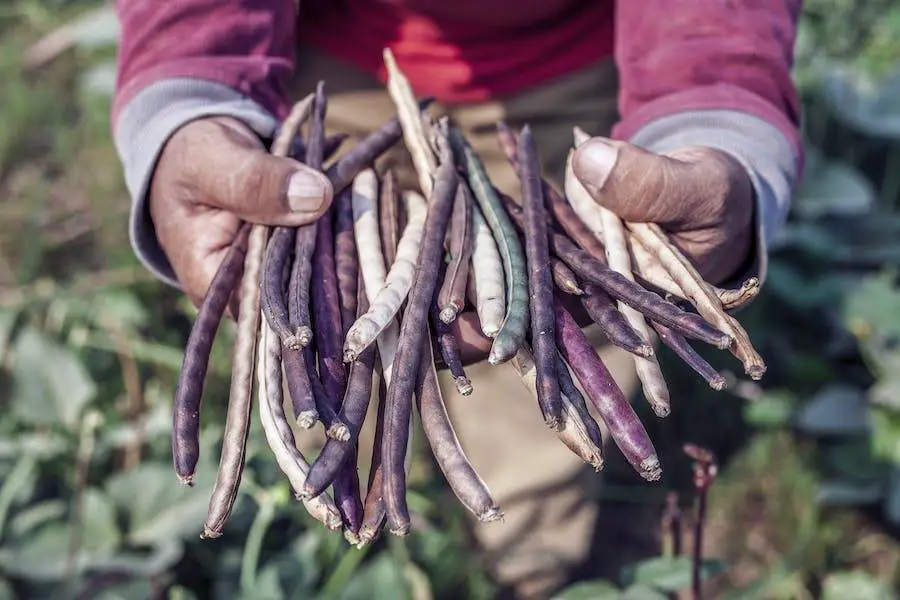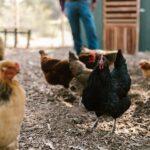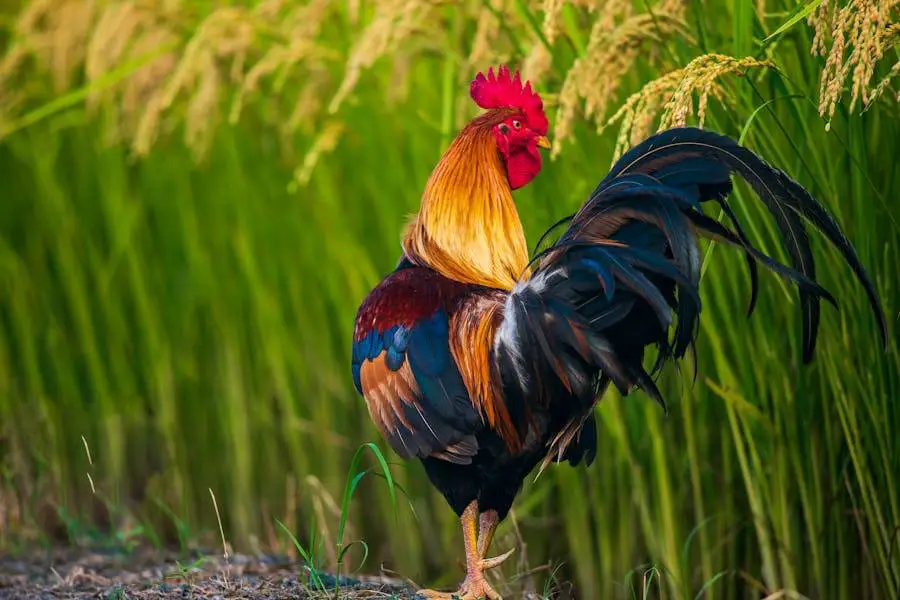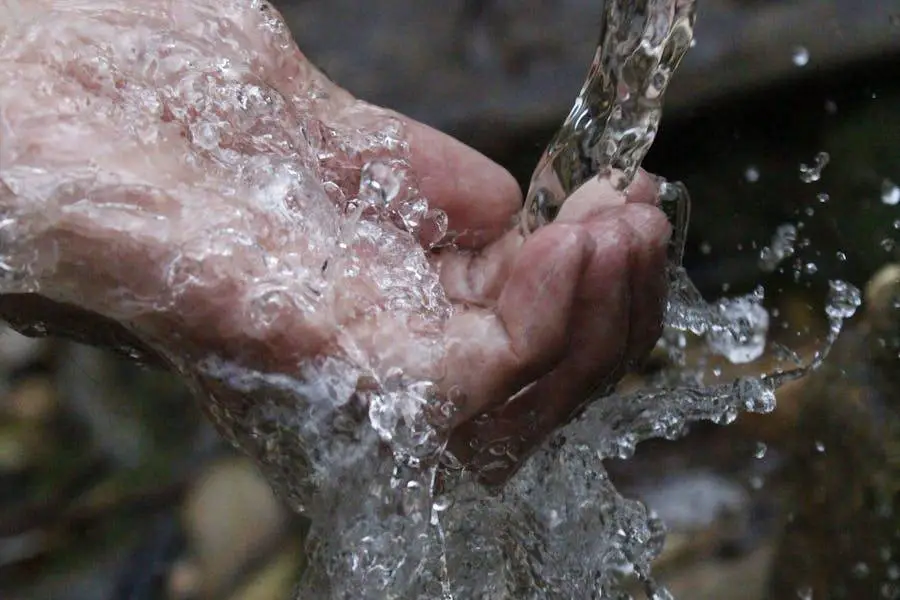Table of Contents
Purple hull peas, a beloved southern delicacy, are cherished for their unique, hearty flavor and prolific growth habits.

Drying is a timeless method of preservation that not only extends the shelf life of food but also retains much of its nutritional value.
When it comes to purple hull peas, drying provides an efficient way to store these nutritious legumes, ensuring you have a steady supply long after the growing season has ended.
This comprehensive guide will walk you through the process of drying purple hull peas, from harvesting at the right time to the specifics of different drying methods. Let’s dive in.
Preparing Purple Hull Peas for Drying
Harvesting at the Right Time
Identifying the Ideal Stage for Harvesting
To ensure the best taste and texture, it’s crucial to harvest purple hull peas when they are fully matured but not overly ripe.
The pods should have a vibrant purple color and feel firm to the touch. When you open the pod, the peas inside should be plump and brightly colored.
Techniques for Effective Harvesting
Harvesting purple hull peas is simple but requires a gentle touch to prevent damaging the pods.
Grasp the pod firmly at its base and pull it away from the vine. If the pod does not come off easily, use a pair of garden shears to cut it from the vine.
Cleaning and Sorting the Peas
Removing Dirt and Debris
Once you’ve harvested your peas, rinse them under cool running water to remove any dirt or debris. This step is essential to prevent any foreign particles from getting into your dried peas.
Separating Healthy Peas from Damaged Ones
After washing, sort through your peas and separate the healthy ones from any that are damaged or discolored. Damaged peas can affect the quality of your dried batch and should be discarded.
The Drying Process
Drying is a time-honored method of preserving foods. There are several ways to dry purple hull peas, each with its own advantages.
Sun Drying Method
Preparing for Sun Drying
To sun dry your peas, spread them out on a clean, dry surface where they will get plenty of sunlight but not so much heat that they cook.
A mesh screen is an ideal surface because it allows air to circulate around the peas, promoting even drying.
Steps in Sun Drying Purple Hull Peas
Spread the peas in a single layer and leave them exposed to the sun. It’s crucial to bring them in at night to protect them from dew and potential pests.
Depending on the weather, sun drying can take several days to a week.
Oven Drying Method
Setting Up for Oven Drying
If you don’t have the outdoor space or the weather isn’t cooperative, oven drying is a great option. Preheat your oven to its lowest setting, usually around 150°F (65°C).
The Oven Drying Process
Arrange the peas in a single layer on a baking sheet and place them in the preheated oven. Leave the oven door slightly ajar to allow moisture to escape.
Stir the peas every hour to ensure even drying. This process can take 6 to 8 hours.
Using a Food Dehydrator
Preparing Peas for a Dehydrator
A food dehydrator is an excellent tool for drying peas. Before using one, rinse your peas and pat them dry to remove excess moisture.
Dehydrator Settings and Timing
Set your dehydrator to around 135°F (57°C). Place the peas in a single layer on the dehydrator trays and dry for 6-8 hours, or until the peas are hard and no moisture remains.
Storing Dried Purple Hull Peas
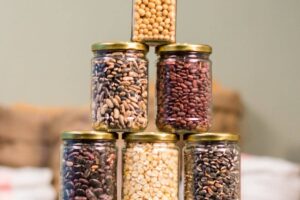
Once your peas are dried, proper storage is crucial to maintaining their quality.
Suitable Storage Containers
Selecting the Right Containers
Dried peas should be stored in airtight containers to protect them from moisture and pests. Glass jars, metal tins with tight lids, or vacuum-sealed bags work well.
Preparing Containers for Storage
Before storing your peas, ensure your chosen containers are clean and dry. Any moisture can rehydrate the peas and lead to mold growth.
Optimal Storage Conditions
Temperature and Humidity Considerations
Store your dried peas in a cool, dark place. A pantry or cellar is ideal. Avoid areas with high humidity or large temperature fluctuations.
The Role of Light Exposure
Exposure to light can degrade the quality of dried peas over time. Keep your stored peas out of direct sunlight.
Rehydrating and Cooking Dried Peas
Dried peas need to be rehydrated before cooking. This process is straightforward but requires some planning.
Rehydrating Dried Peas
Soaking Techniques
To rehydrate your peas, soak them in plenty of water. A common method is to soak them overnight in a bowl of cold water.
If you’re short on time, a quick-soak method involves boiling the peas for 2 minutes, then letting them sit in the hot water for an hour.
Timing and Water Ratios
Whether you opt for the slow or quick-soak method, make sure to use plenty of water. A good rule of thumb is to use three cups of water for every cup of dried peas.
Cooking Rehydrated Peas

Basic Cooking Instructions
After soaking, drain your peas and transfer them to a pot. Cover with fresh water, bring to a boil, then reduce to a simmer. Cook until the peas are tender, about 1-2 hours.
Recipe Ideas for Purple Hull Peas
Purple hull peas can be used in a variety of dishes. Try them in soups, stews, salads, or as a simple side dish with garlic and herbs.
Common Mistakes to Avoid
Even experienced gardeners can make mistakes when drying and storing peas. Here’s what to watch out for.
During the Drying Process
Pitfalls to Avoid When Drying
Overdrying can make peas hard and difficult to rehydrate. Underdrying can lead to mold during storage. To avoid these issues, check your peas regularly during the drying process.
Troubleshooting Common Drying Issues
If your peas are drying unevenly, try stirring them more frequently. If they’re not drying quickly enough, consider increasing the heat slightly or improving air circulation.
During Storage
Mistakes That Can Ruin Stored Peas
Using containers that aren’t airtight or storing peas in a humid area can lead to spoilage. Always check your stored peas for signs of mold or pests before using.
Tips for Long-Term Storage Success
For long-term storage, consider vacuum sealing your dried peas or storing them in the freezer. Both methods can extend the shelf life of dried peas.
The Nutritional Value of Dried Purple Hull Peas
Purple hull peas are not just tasty—they’re also packed with nutrients.
Nutrient Content
Vitamins and Minerals in Purple Hull Peas
Purple hull peas are rich in vitamins A and C, as well as several B vitamins. They’re also a good source of minerals like potassium, magnesium, and iron.
Protein and Fiber Content
As a legume, purple hull peas are high in protein, which makes them a great choice for vegetarian and vegan diets. They’re also packed with dietary fiber, which supports digestive health.
Health Benefits
How Purple Hull Peas Contribute to a Balanced Diet
With their high nutrient content, purple hull peas are a healthy addition to any diet. Their high fiber and protein content can help keep you feeling full and satisfied.
Unique Health Advantages of Purple Hull Peas
The antioxidants found in purple hull peas can support heart health and reduce inflammation.
Their high fiber content can also help regulate blood sugar levels, making them a good choice for people with diabetes.
Conclusion
In conclusion, drying purple hull peas is a simple, effective way to preserve this delicious legume. With the right techniques, you can enjoy homegrown purple hull peas any time of the year.

